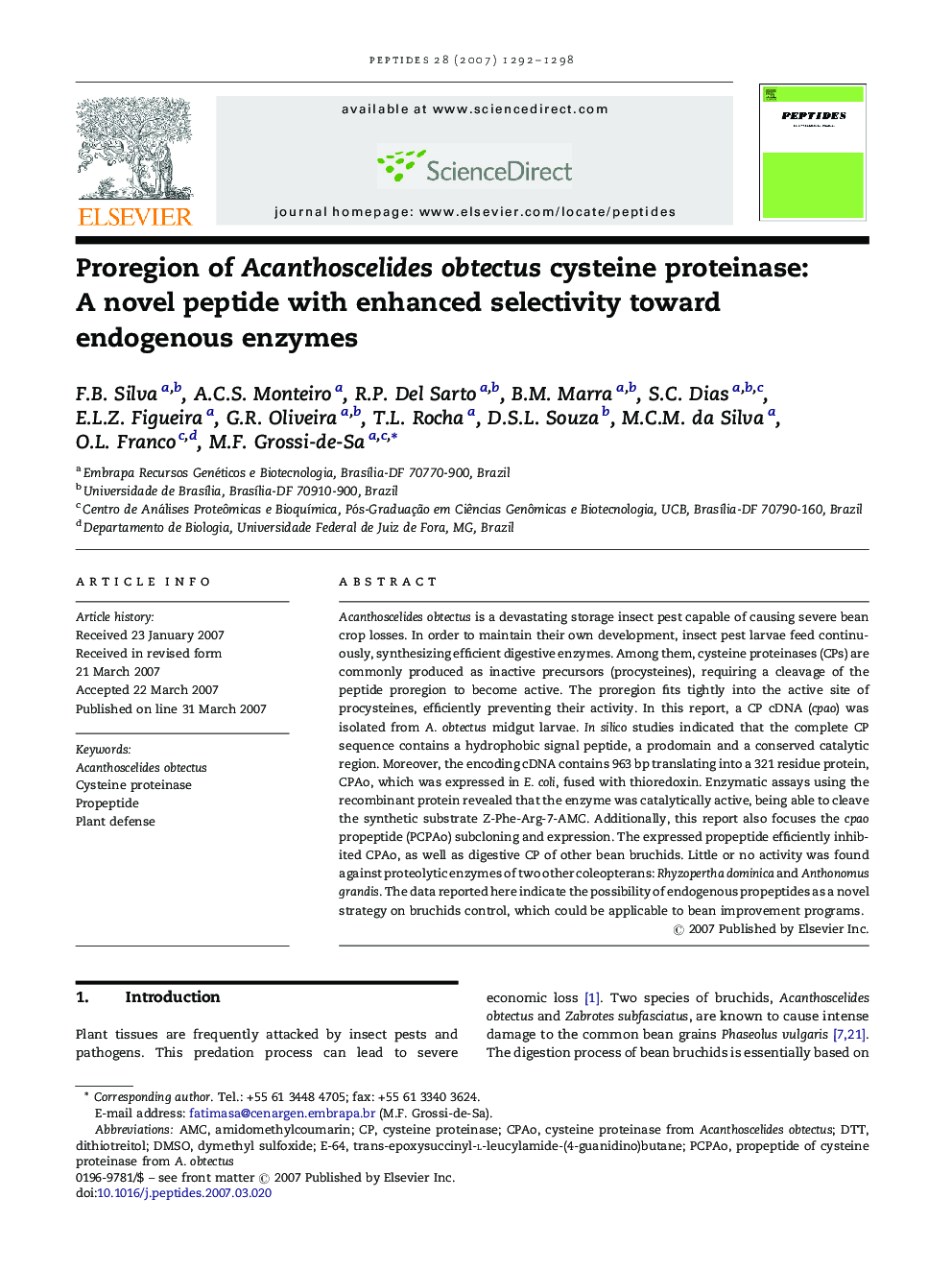| Article ID | Journal | Published Year | Pages | File Type |
|---|---|---|---|---|
| 2008545 | Peptides | 2007 | 7 Pages |
Acanthoscelides obtectus is a devastating storage insect pest capable of causing severe bean crop losses. In order to maintain their own development, insect pest larvae feed continuously, synthesizing efficient digestive enzymes. Among them, cysteine proteinases (CPs) are commonly produced as inactive precursors (procysteines), requiring a cleavage of the peptide proregion to become active. The proregion fits tightly into the active site of procysteines, efficiently preventing their activity. In this report, a CP cDNA (cpao) was isolated from A. obtectus midgut larvae. In silico studies indicated that the complete CP sequence contains a hydrophobic signal peptide, a prodomain and a conserved catalytic region. Moreover, the encoding cDNA contains 963 bp translating into a 321 residue protein, CPAo, which was expressed in E. coli, fused with thioredoxin. Enzymatic assays using the recombinant protein revealed that the enzyme was catalytically active, being able to cleave the synthetic substrate Z-Phe-Arg-7-AMC. Additionally, this report also focuses the cpao propeptide (PCPAo) subcloning and expression. The expressed propeptide efficiently inhibited CPAo, as well as digestive CP of other bean bruchids. Little or no activity was found against proteolytic enzymes of two other coleopterans: Rhyzopertha dominica and Anthonomus grandis. The data reported here indicate the possibility of endogenous propeptides as a novel strategy on bruchids control, which could be applicable to bean improvement programs.
